 W
WThe Australian green tree frog, also known as simply green tree frog in Australia, White's tree frog, or dumpy tree frog, is a species of tree frog native to Australia and New Guinea, with introduced populations in the United States and New Zealand, though the latter is believed to have died out. It is morphologically similar to some other members of its genus, particularly the magnificent tree frog (R. splendida) and the white-lipped tree frog (R. infrafrenata).
 W
WThe Bibron's toadlet or brown toadlet is a species of Australian ground-dwelling frog that, although having declined over much of its range, is widespread through most of New South Wales, Victoria, south-eastern Queensland and eastern South Australia, including Kangaroo Island.
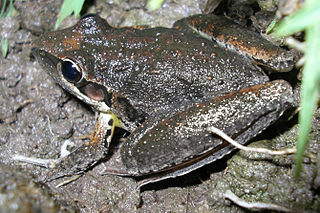 W
WThe broad-palmed frog is a species of ground-dwelling tree frog. It is native to much of eastern Australia. They can be found from mid-Queensland to south of Sydney. It is associated with the coast and inland, and is distributed as far west in New South Wales to the SA border.
 W
WThe common eastern froglet is a very common, Australian ground-dwelling frog, of the family Myobatrachidae.
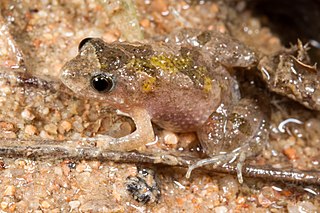 W
WThe desert froglet is a species of frog in the family Myobatrachidae, endemic to Australia. The species is not under any threat of extinction. Desert froglets occur mainly in dry or moist savanna habitats, principally from the mid-western border of Northern Territory, south-east into western Queensland and New South Wales and the north-east corner of South Australia. They can also be found along the Queensland coast where it has been recorded between Townsville and Cooktown, and as far south as Hervey Bay.Full listing of observations and specimens.
 W
WThe desert spadefoot toad is a species of frog in the family Limnodynastidae. It is endemic to Australia. Its natural habitats are subtropical or tropical dry shrubland, subtropical or tropical dry lowland grassland, intermittent freshwater marshes, hot deserts, and temperate desert.
 W
WThe desert tree frog or little red tree frog is a tree frog native to Australia, southern New Guinea, and Timor. It is one of Australia's most widely distributed frogs, inhabiting northern Australia, including desert regions and much of temperate eastern Australia. It is one of the few Australian tree frogs to inhabit arid, tropical, and temperate climates.
 W
WThe eastern sign-bearing froglet is a small, ground dwelling frog native to eastern Australia.
 W
WGeocrinia laevis, the smooth frog, southern smooth froglet, smooth froglet, or Tasmanian smooth frog, is a species of frog in the family Myobatrachidae. It is endemic to Australia and found in Tasmania, southwestern Victoria, and the extreme southeast of South Australia.
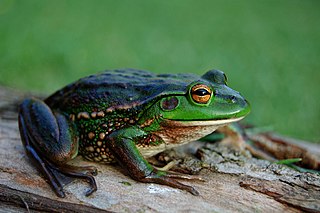 W
WThe growling grass frog, also commonly known as the southern bell frog, warty swamp frog and erroneously as the green frog, is a species of ground-dwelling tree frog native to southeastern Australia, ranging from southern South Australia along the Murray River though Victoria to New South Wales, with populations through Tasmania. This species' common names vary between states; the name southern bell frog applies to New South Wales, growling grass frog in Victoria and South Australia, and green and gold frog in Tasmania. This species has been introduced to New Zealand.
 W
WRanoidea cultripes, the knife-footed frog is a species of frog in the family Pelodryadidae. It is endemic to Australia. Its natural habitats are subtropical or tropical dry lowland grassland, intermittent rivers, and intermittent freshwater marshes.
 W
WLimnodynastes dumerilii is a frog species from the family Limnodynastidae. The informal names for the species and its subspecies include eastern or southern banjo frog, and bull frog. The frog is also called the pobblebonk after its distinctive "bonk" call, which is likened to a banjo string being plucked. There are five subspecies of L. dumerilii, each with different skin coloration. The species is native to eastern Australia. There has been one occurrence in New Zealand, when tadpoles of the species were found in 1999 and destroyed.
 W
WThe long-thumbed frog, Fletcher's frog or barking marsh frog is a species of non-burrowing ground frog native to south-eastern Australia. The species belongs to the genus Limnodynastes. The twelve species in the genus are characterised by a lack of toe pads. Following phylogenetic analysis, the species was placed in L. peronii clade group alongside L. depressus, L. tasmaniensis and L. peronii.
 W
WThe Main's frog is a species of frog in the family Pelodryadidae. It is endemic to Western and Central Australia.
 W
WThe orange-crowned toadlet, or western toadlet, is a species of frog in the family Myobatrachidae. It is endemic to Australia. Its natural habitats are temperate shrubland, Mediterranean-type shrubby vegetation, intermittent rivers, intermittent freshwater lakes, freshwater marshes, intermittent freshwater marshes, and rocky areas.
 W
WThe painted burrowing frog is a species of burrowing frog native to western Victoria, eastern South Australia and southern New South Wales. They are also one of six species of frog which inhabit Kangaroo Island.
 W
WPeron's tree frog, also known as the emerald-spotted tree frog, emerald-speckled tree frog, laughing tree frog, and maniacal cackle frog, is a common Australian tree frog of the family Pelodryadidae.
 W
WRanoidea platycephala, commonly known as the water-holding frog, is a frog common to most Australian states. It differs from most other members of the family Pelodryadidae as a ground dweller and the ability to aestivate. It can live for five years without drinking.
 W
WThe shoemaker frog is a species of frog in the family Limnodynastidae. It is found in Western Australia. Its natural habitats are temperate scrub, subtropical or tropical dry shrubland, Mediterranean-type shrubby vegetation, subtropical or tropical dry lowland grassland, intermittent freshwater marshes, hot deserts, and temperate desert. The frog is named after the noise they make which sounds like a hammer in use. The frog is yellow to golden in colour. It usually has some brown blotches. When they breed, the female frog lays 200 – 1000 eggs.
 W
WThe southern brown tree frog, also known as the brown tree frog, whistling tree frog, or Ewing's tree frog, is a species of tree frog native to Australia: most of southern Victoria, eastern South Australia, southern New South Wales from about Ulladulla—although this species is reported to occur further north—and throughout Tasmania including the Bass Strait Islands, in which state it is the most frequently encountered frog. It has been introduced to New Zealand, where it can be locally abundant.
 W
WSpencer's burrowing frog is a species of frog native to western and central Australia.
 W
WThe spotted grass frog or spotted marsh frog is a terrestrial frog native to Australia. It is distributed throughout all of New South Wales and Victoria, eastern South Australia, the majority of Queensland, and eastern Tasmania. It is also naturalised in Western Australia, having been unintentionally introduced at Kununurra in the 1970s, apparently during the relocation of several hundred transportable homes from Adelaide.
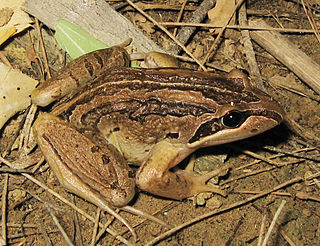 W
WThe striped marsh frog or brown-striped frog is a predominantly aquatic frog native to coastal Eastern Australia. It is a common species in urban habitats.
 W
WThe Sudell's frog, painted burrowing frog, trilling frog or desert trilling frog is a species of burrowing frog common to a large part of southeastern Australia. It is found on and west of the Great Dividing Range of New South Wales to western Victoria and southern Queensland as well as far eastern South Australia.
 W
WThe Sudell's frog, painted burrowing frog, trilling frog or desert trilling frog is a species of burrowing frog common to a large part of southeastern Australia. It is found on and west of the Great Dividing Range of New South Wales to western Victoria and southern Queensland as well as far eastern South Australia.
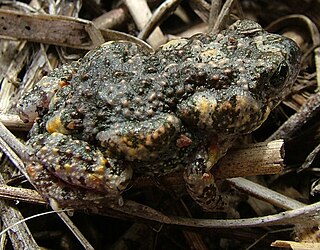 W
WThe wrinkled toadlet is a species of small, ground-dwelling frog in the family Myobatrachidae It is endemic to Australia. It is also commonly called the small-headed toadlet, red-groined toadlet or the chubby gungan.